Innovative Zen Yard and Zen Backyard Ideas for a Tranquil Retreat
Are you wrestling with a chaotic yard that feels anything but peaceful? A cluttered outdoor space can weigh on the mind and drain energy. Simple changes may help turn your yard into a haven of calm.
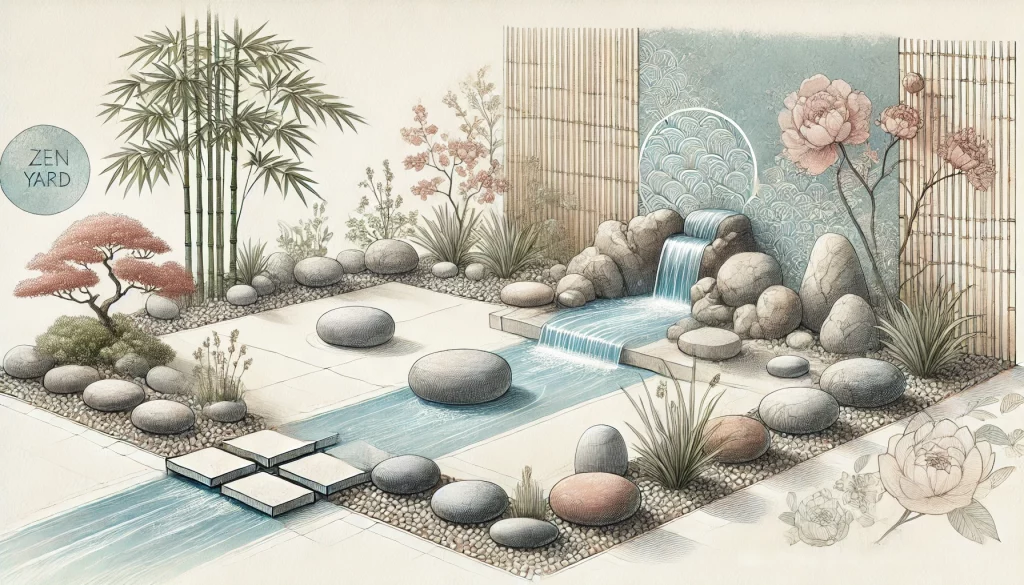
What if the secret to tranquility isn’t about having more space, but reimagining the space you already own? Reworking your outdoor area can bring a sense of order and comfort without expanding your property.
The breakthrough isn’t adding extra features—it’s adopting the art of Zen design to transform every corner into a mindful sanctuary. A thoughtful layout and simple elements work together to create a space that invites quiet reflection and gentle living.
A Zen yard is a thoughtfully arranged outdoor area that values balance, simplicity, and a deep sense of calm. It combines ancient Zen principles with modern landscaping ideas to produce a setting that soothes the senses. Whether your space is small or large, these ideas can refresh your outdoor retreat. Learn more about our Zen Garden Tips for more design insights.
Transforming your yard with Zen principles means choosing natural elements, clear lines, and a minimalist approach. This style helps reduce stress and makes daily moments more enjoyable. A balanced design can boost curb appeal and even add value to your home.
The Philosophy Behind Zen Yard Design
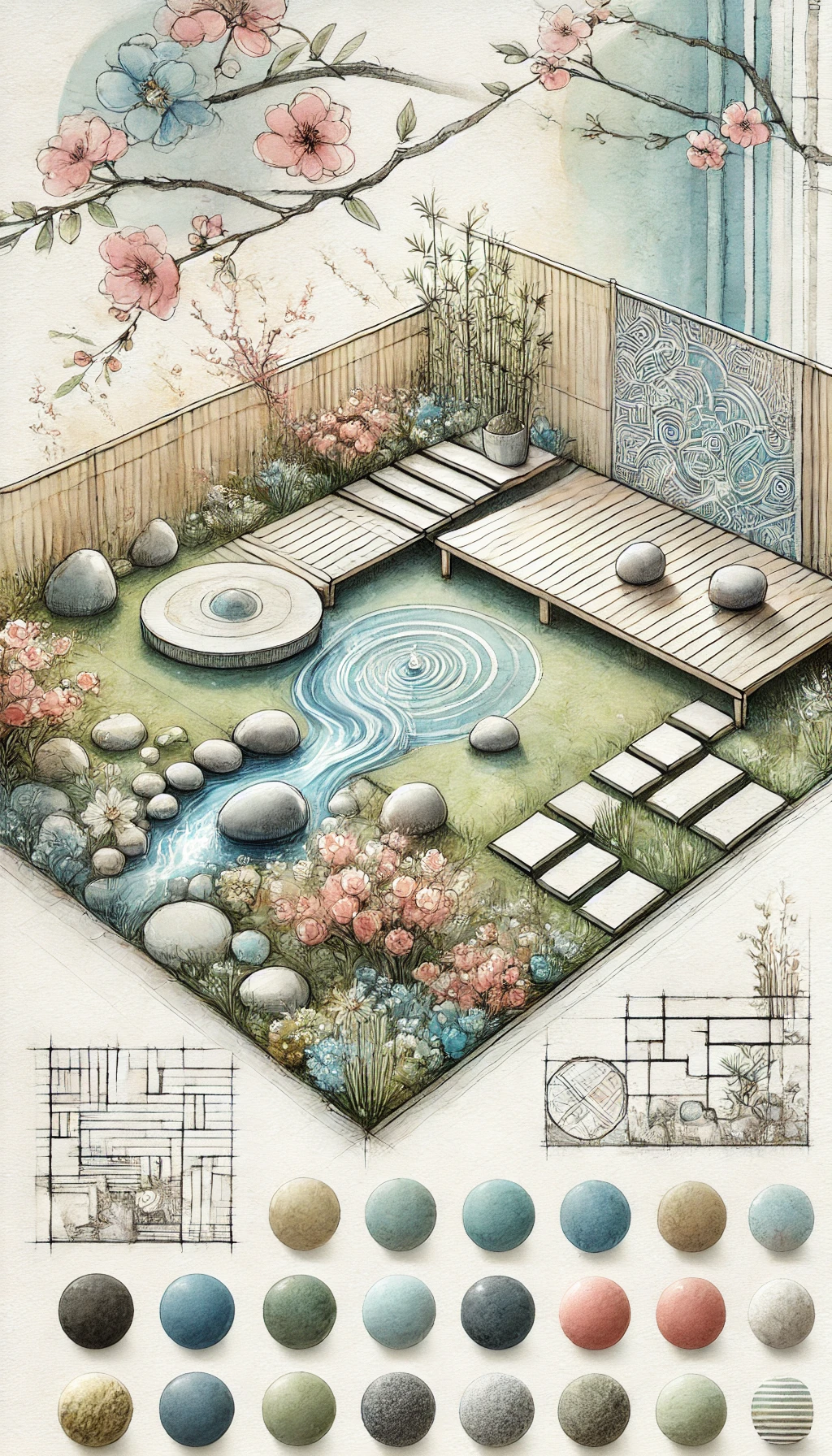
Understanding Zen Principles
Zen principles center on simplicity, mindfulness, and harmony. They encourage a focus on what truly matters by reducing distractions. In a well-designed yard, each element serves a purpose and contributes to a calm atmosphere.
Key points include:
- Simplicity: Using minimal features to create a clean, uncluttered space.
- Mindfulness: Arranging elements in a way that invites quiet thought.
- Harmony: Balancing natural materials and shapes to achieve a soothing effect.
These ideas help guide the layout and design of outdoor spaces that support a clear, relaxed mind. The connection between the natural world and personal well-being is a cornerstone of Zen design.
Historical Roots and Modern Adaptations
Japanese Zen gardens have a long history that spans centuries. Traditional Zen gardens use rocks, gravel, and carefully placed plants to symbolize nature’s balance. Early designs aimed to prompt meditation and foster inner peace.
Modern Zen yard ideas build on these age-old practices. Designers blend time-tested techniques with contemporary materials to suit today’s lifestyle. For instance, subtle lighting and modern water features can complement classic elements. Curious minds can check out our feature on Japanese Zen Gardens for further details on traditional styles.
Today’s adaptations honor the past while meeting current needs. Outdoor spaces are planned with a mix of natural textures and modern accents that make the style accessible to all. A careful balance of old and new creates a tranquil setting that resonates with many homeowners.
Benefits of a Zen-Inspired Outdoor Space
A Zen-inspired space can help lower stress levels and promote calm. When the yard reflects simplicity and balance, it naturally becomes a spot for relaxation. Homeowners often notice a boost in mood after spending time in such surroundings.
Other benefits include an improved aesthetic that enhances property appeal. A well-organized garden stands out in your neighborhood and may even increase the value of your home. A list of benefits is provided below:
- Stress Reduction: A calm environment supports mental well-being.
- Mindfulness: Quiet spaces encourage reflective thought.
- Enhanced Curb Appeal: A balanced design creates visual interest.
- Potential Increase in Property Value: A tidy, attractive yard can add value.
A peaceful yard invites reflection and creates a natural retreat from everyday noise. Many find that a Zen space leads to more mindful living and a renewed connection with nature.
Essential Elements of a Zen Yard
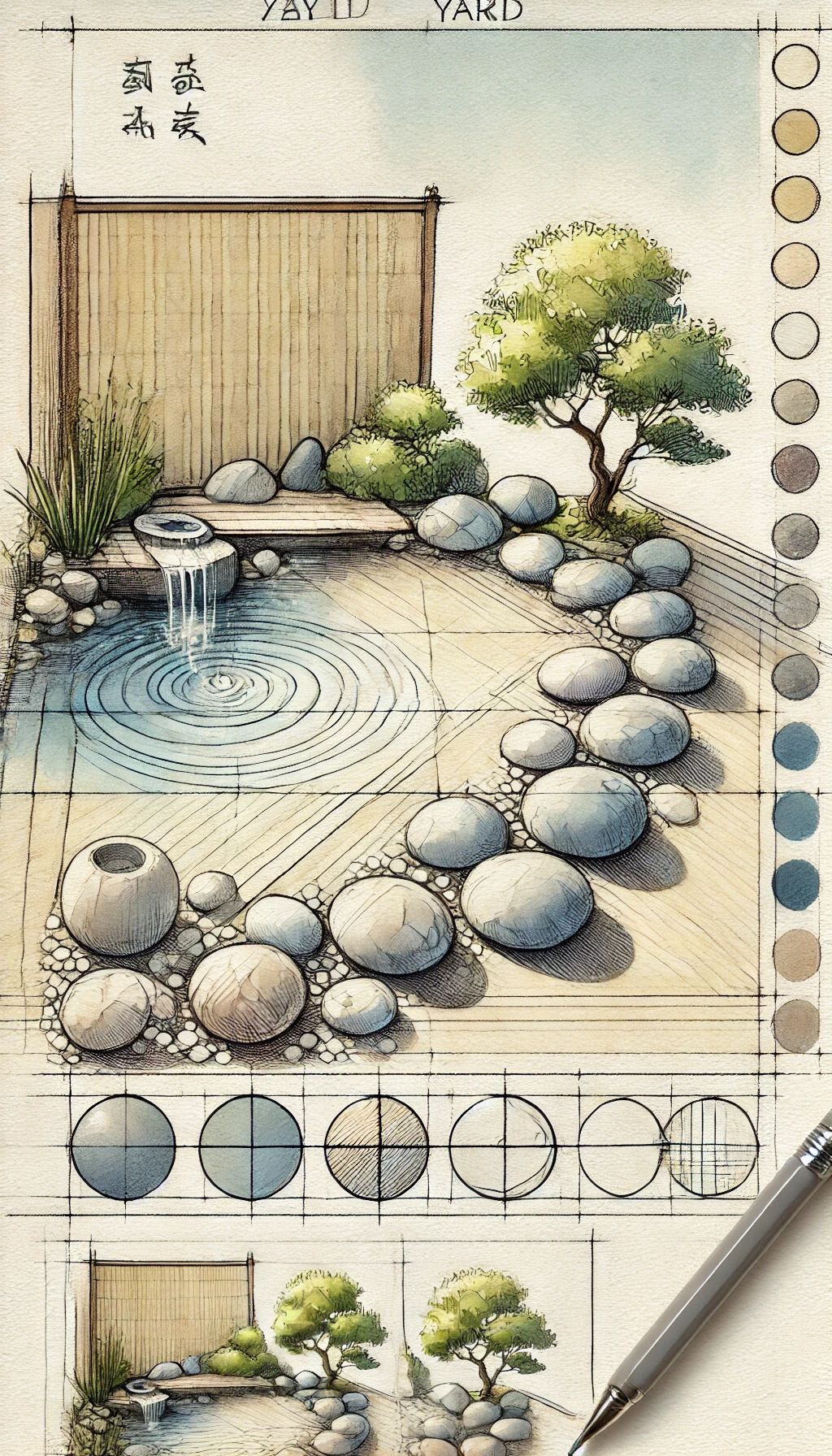
Key Components and Materials
A Zen yard thrives on nature’s simplicity. Stones form a solid base that anchors the design, while gentle water features evoke a sense of calm. Minimalist plantings, arranged with care, contribute a subtle burst of greenery or simple features such as stone lanterns can create harmony. Each element is chosen to balance texture and color. Negative space, used with intention, enhances the overall serenity. A few well-placed materials can turn an ordinary area into a mindful retreat.
A soft, muted color palette pairs well with natural materials. Smooth stones and carefully selected plants add gentle contrasts. Even a small water feature can change the atmosphere by introducing movement and sound. A harmonious mix of these elements helps create an inviting outdoor space where every detail supports a calm mindset.
The Art of Minimalism and Flow
Minimalism serves as the heartbeat of Zen design. Open areas and uncluttered spaces invite a natural flow that welcomes quiet moments. A balanced layout is achieved through careful positioning of each element. Symmetry and asymmetry work together to create a relaxed visual rhythm. Thoughtful focal points draw the eye and encourage reflection. Each design choice contributes to a sense of order that soothes the mind and spirit.
In a Zen yard, every item matters, and every empty space speaks volumes. Clear lines and modest accents guide movement throughout the space. The overall effect is one of effortless balance and gentle flow, where every corner reflects a mindful simplicity.
Integrating Specific Zen Yard Elements
Transforming forgotten corners into tranquil spots brings new life to your outdoor area. A neglected corner may turn into a quiet reading nook or a small meditation space. Every inch counts in Zen yard design. Arranging elements to maximize space is key. A dedicated Zen yard corner can become a personal retreat that invites calm and clarity.
For larger areas, create zones that serve distinct purposes. A small section might host a delicate water feature, while another area welcomes a cluster of minimalist plantings. This thoughtful integration helps every part of your yard contribute to the overall sense of peace. More detailed ideas can be found in our Outdoor Meditation Ideas.
Zen Yard Ideas for Various Layouts and Spaces
Compact Spaces and Urban Yards
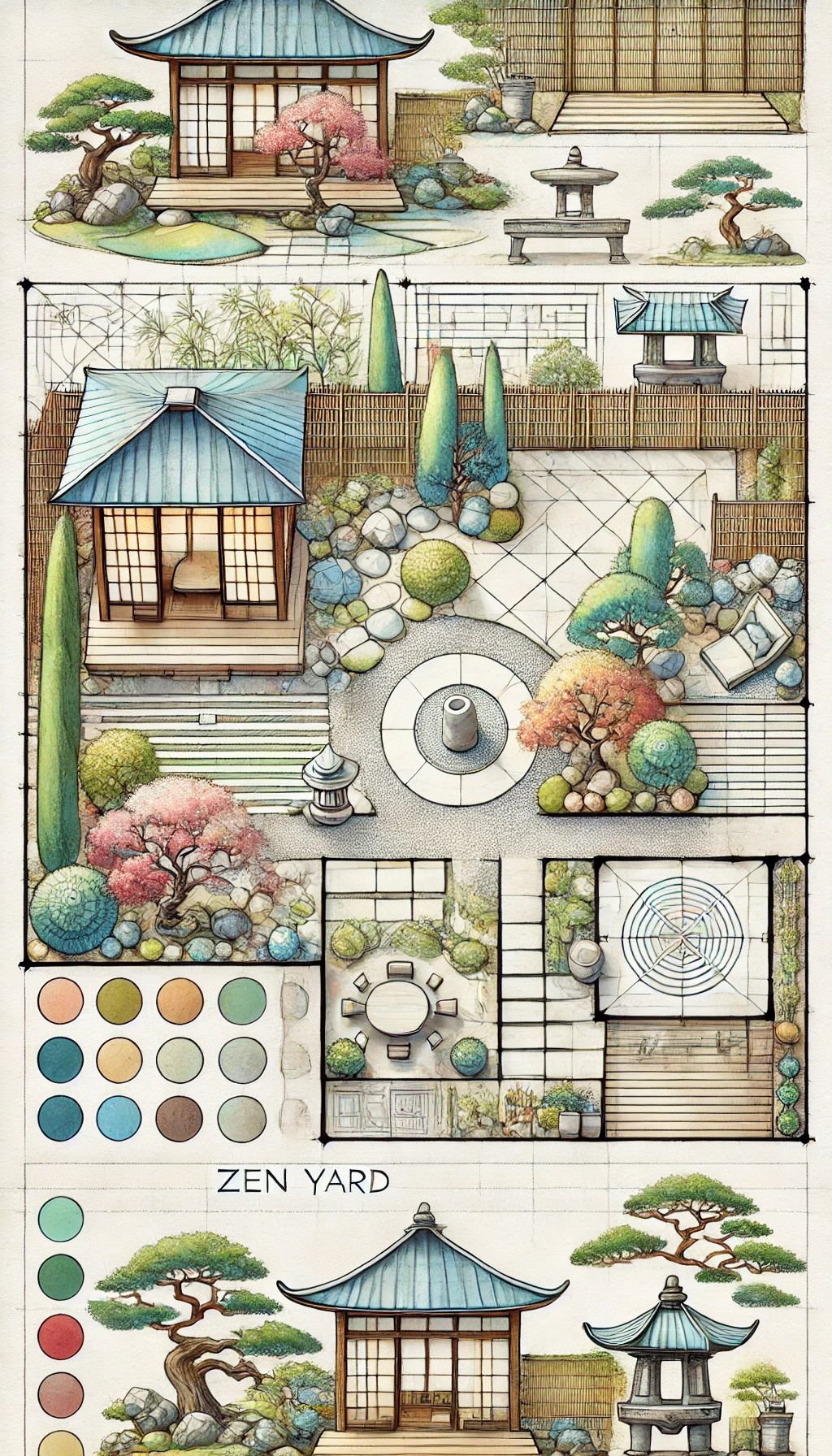
Urban settings offer unique challenges that can spark creative Zen yard ideas. Compact spaces can transform into intimate retreats with the right planning. Strategic placement of a few natural elements, like a small rock garden or a miniature water feature, can redefine a limited area. A dedicated Zen yard corner in an urban yard becomes a pocket of calm amidst city life.
Creative design in small yards involves maximizing every inch. Vertical planting, carefully arranged pavers, and modest sculptures work together to create a serene atmosphere. The result is a refreshing outdoor spot that encourages relaxation even in a bustling urban setting.
Expansive Backyards
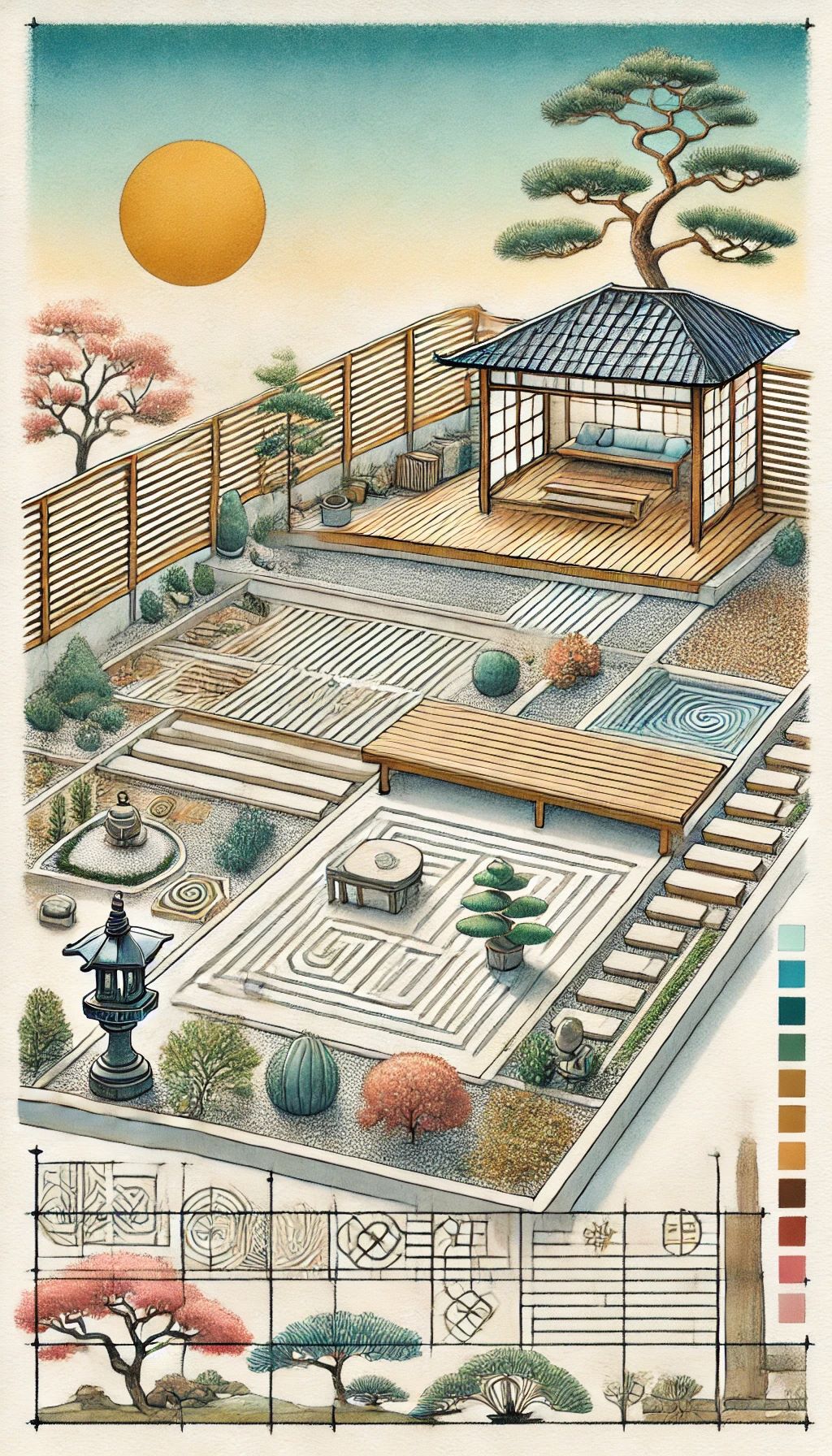
A sprawling backyard opens up endless possibilities for a full-scale Zen retreat. Homeowners can develop a complete sanctuary that flows seamlessly from one area to the next. An expansive Zen backyard can include multiple zones, each offering its own sense of calm. A backyard Zen garden might feature a winding pathway, gentle water features, and thoughtfully placed stones that invite exploration and quiet reflection.
Designing a large space involves balancing nature with clean lines. Landscapers often suggest integrating natural elements like native trees and soft lawns with modern accents. A spacious design offers room for both intimate corners and larger communal areas. Such a setting not only soothes the soul but may also increase the property’s appeal.
Specialty Zones within Your Zen Yard
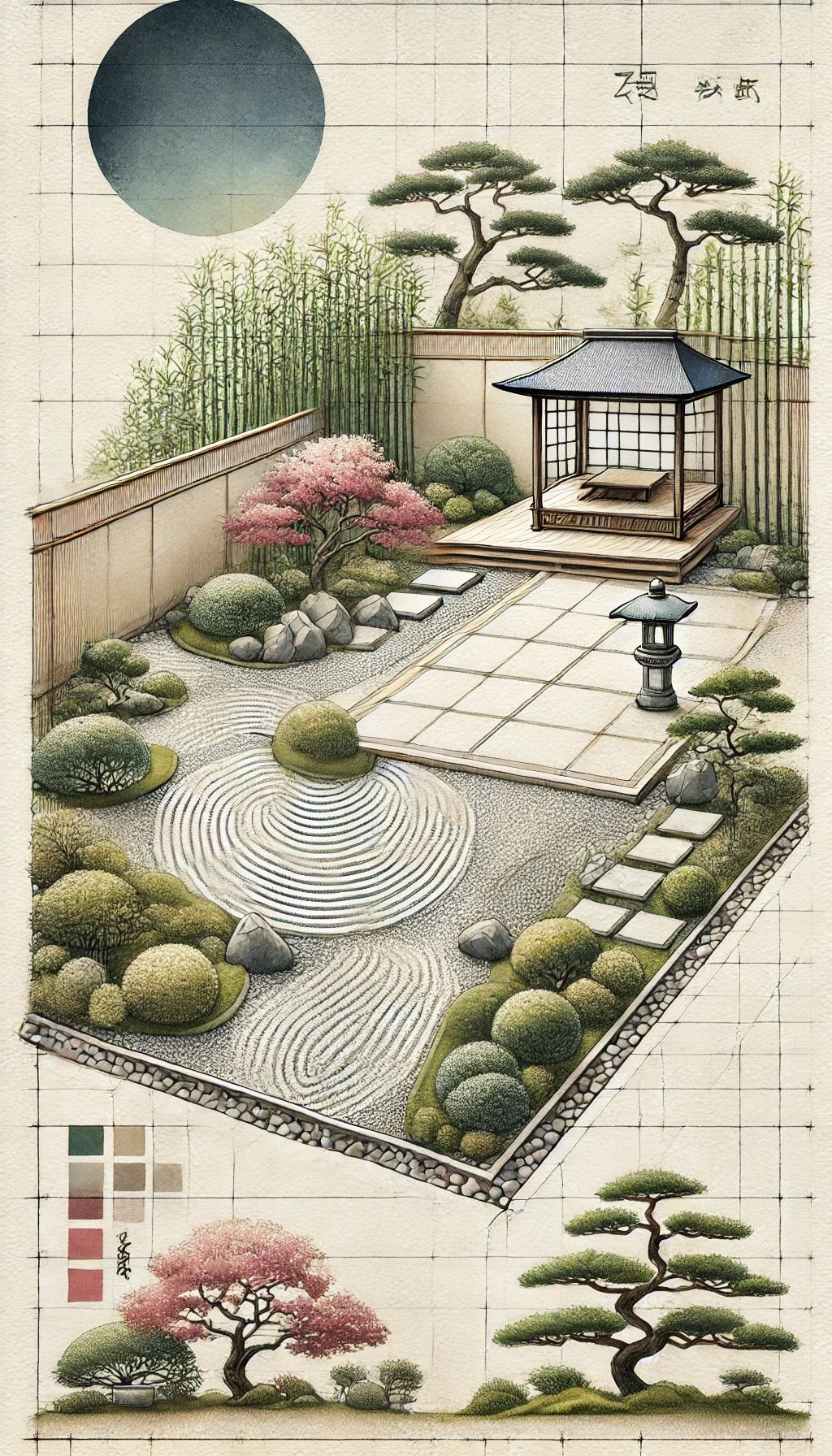
Creating specialty zones allows homeowners to customize their outdoor space. An inviting patio can serve as a peaceful retreat, perfect for quiet evenings or mindful gatherings. A Zen backyard ideas patio might feature soft lighting, comfortable seating, and subtle natural touches. A dedicated meditation space further enhances the outdoor experience, offering a quiet nook for reflection and gentle movement.
Separate zones add layers to the design. A small seating area near a water feature or a secluded corner surrounded by simple, elegant landscaping can serve as a personal haven. Each specialty zone brings a unique aspect of calm that adds depth to your overall Zen design.
Infusing Japanese Style Elements
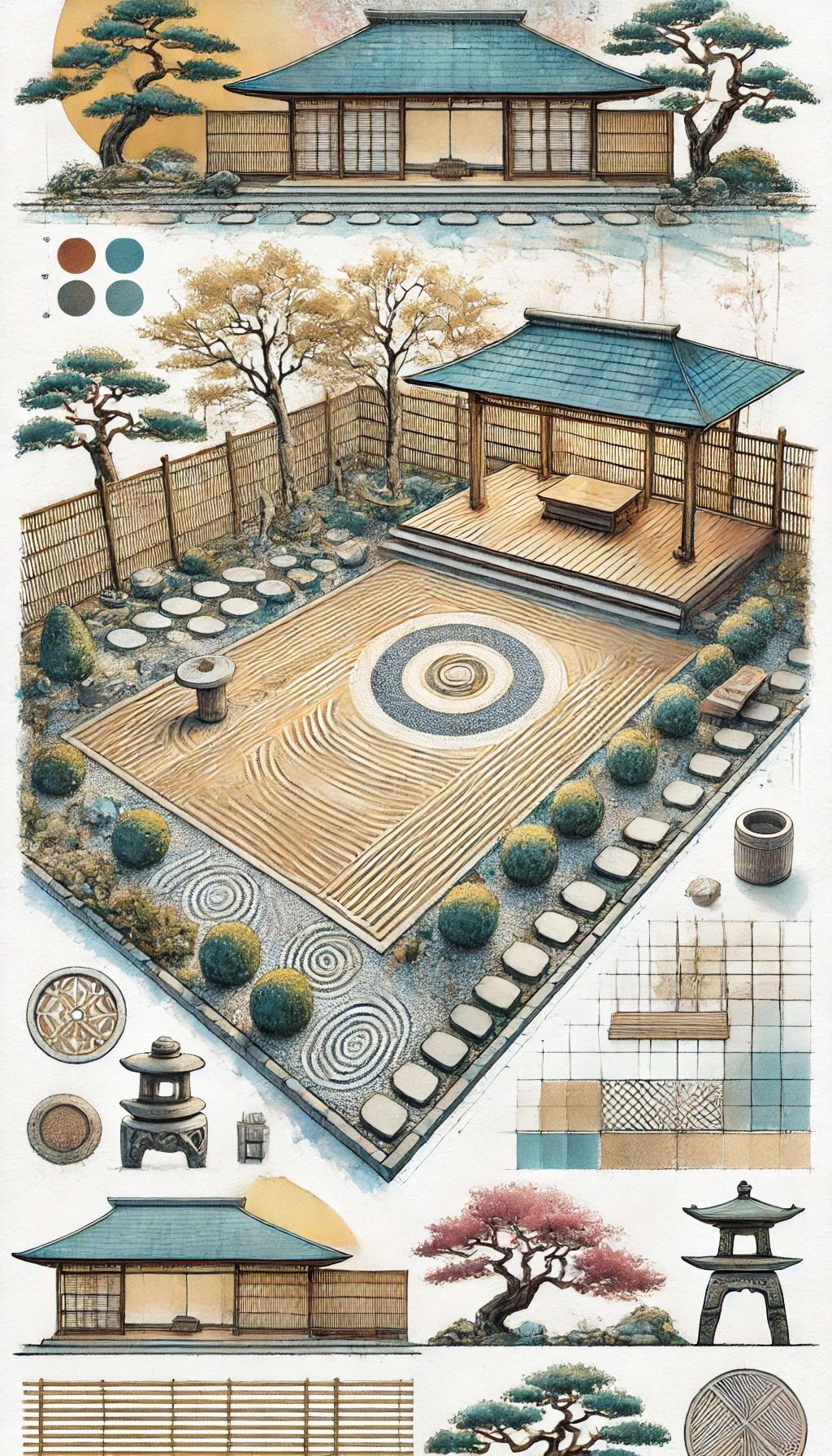
Incorporating elements from Japanese garden traditions enriches the Zen aesthetic. Raked gravel, bamboo accents, and carefully pruned trees can evoke the feel of a classic Japanese Zen garden. Authentic touches blend seamlessly with modern design, offering a refined balance between tradition and innovation. Elements such as simple lanterns or a modest tea area bring cultural depth to your outdoor space.
When planning a design, a few well-chosen Japanese features can redefine your yard’s look. They add not only beauty but also a sense of history and respect for nature. A thoughtful mix of old and new creates a space that feels timeless and inviting.
Planning and Implementing Your Zen Yard Design
Assessing Your Outdoor Space
Start by taking a close look at your yard. Observe areas with abundant sunlight, deep shade, and varied soil. Simple notes on how nature interacts with your space can guide your planning. Identify spots that feel neglected or crowded and consider their potential as calm zones. A clear idea of these factors helps in setting practical goals.
A well-thought-out site review lays the groundwork for a mindful retreat. Write down your ideas and mark the space for potential changes. This preparatory step makes the design process smoother and more enjoyable.
Step-by-Step Guide to Creating Your Zen Yard or Zen Backyard
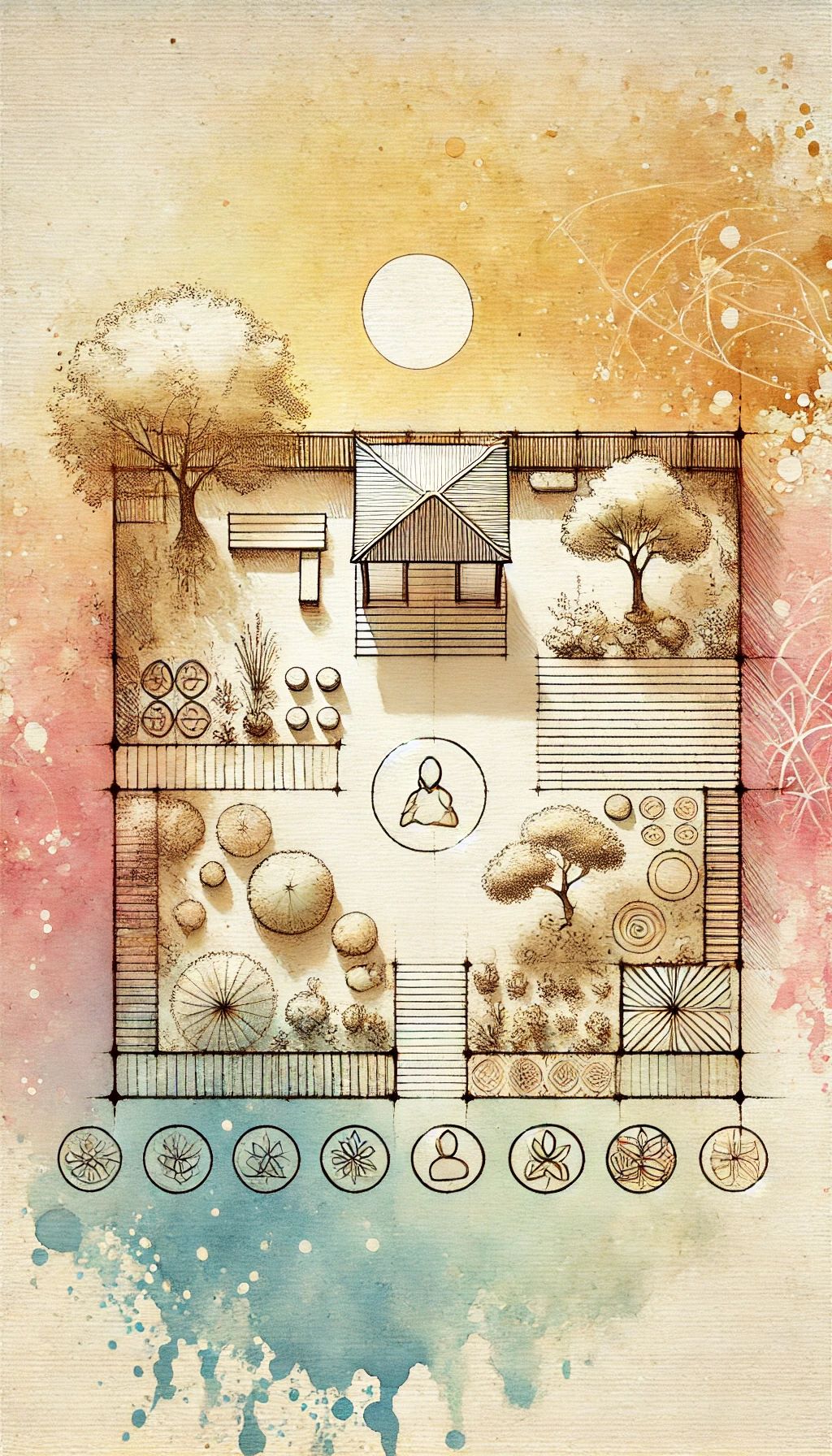
Begin with a simple sketch of your yard. Mark zones for a garden area, a seating nook, and a quiet meditation spot. Planning the layout lets you visualize a harmonious flow. Use gentle lines and soft markers to delineate each zone. Consider reading our Zen Design Ideas page for extra tips.
Next, select natural materials that inspire calm. Smooth stones, a modest water feature, and sparse, thoughtful plantings set a gentle tone. Each chosen element should fit your overall vision. A stone path or a small bench can serve as a focal point in your design.
Implement your plan one step at a time. Prepare the ground, place your chosen features, and complete the details with soft lighting or subtle art pieces. Testing a small section before fully committing can guide adjustments along the way.
Finally, keep your new Zen space well maintained. Regularly check for signs of wear and refresh elements when needed. Small upkeep routines help keep the area inviting. A calm garden requires ongoing care to retain its peaceful charm.
DIY Tips vs. Professional Help
Decide if a DIY project fits your needs or if professional guidance would better suit your vision. Smaller projects, such as arranging stones or planting a few shrubs, may be fun to handle on your own. Larger installations like water features often benefit from expert insights. Consider your available time and skill level before starting.
Weigh your options by comparing the cost, time, and desired outcome. Sometimes a blend of DIY work with occasional professional advice creates the best results. Taking this balanced approach can help you enjoy the transformation process while ensuring a lasting, peaceful space.
Case Studies and Inspirational Examples
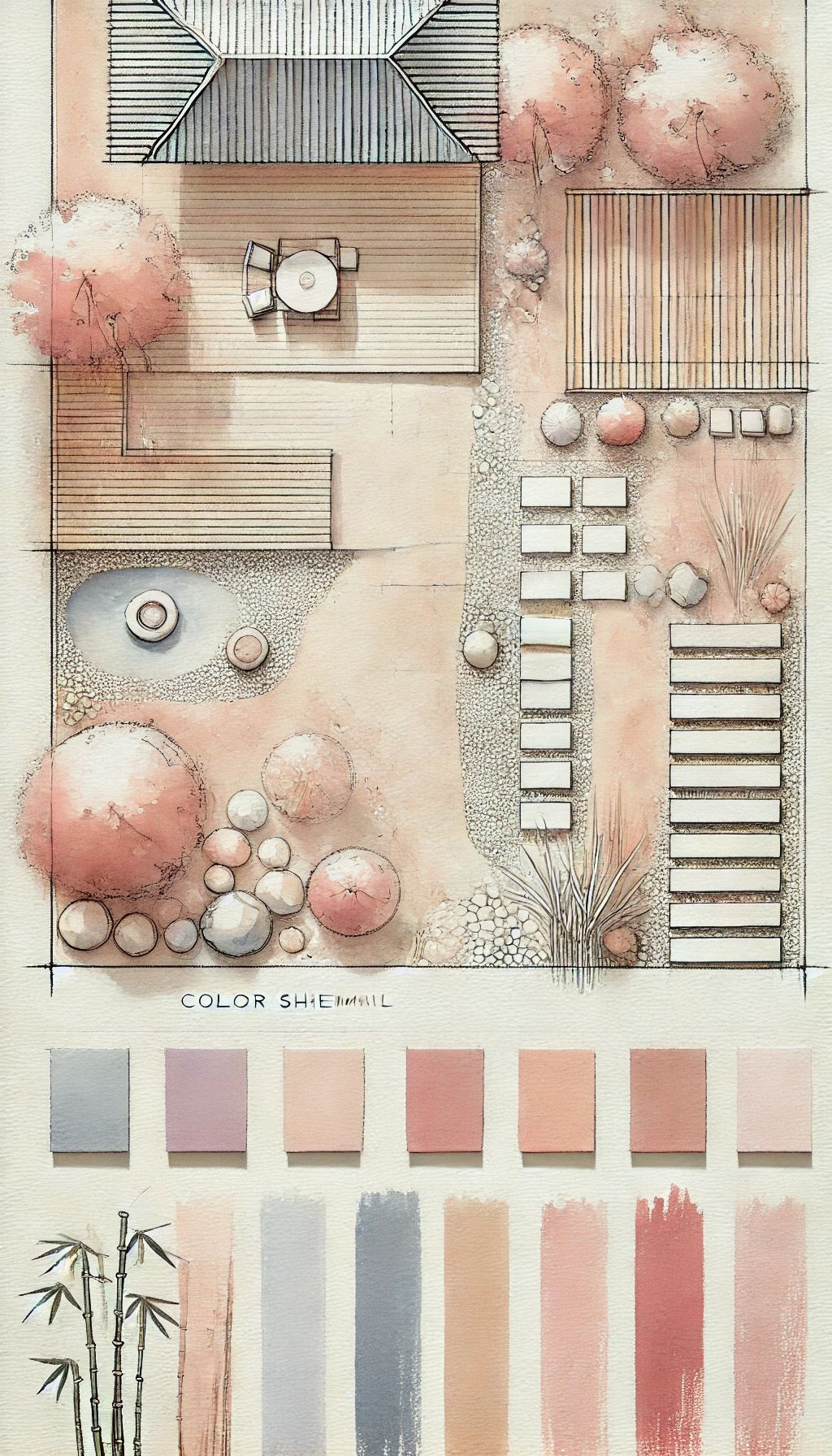
Real-Life Zen Yard Landscapes
Many homeowners have turned ordinary yards into tranquil retreats. In one urban setting, a compact space was transformed into a peaceful corner with a simple rock garden and a calming water feature. In another example, a large suburban backyard was reimagined as a layered Zen retreat featuring soft lawns and minimal plantings. These transformations show that a mindful approach can work in various settings.
Each project highlights unique ideas that fit the space and lifestyle of the owner. A thoughtful design proves that every yard can become a haven for relaxation.
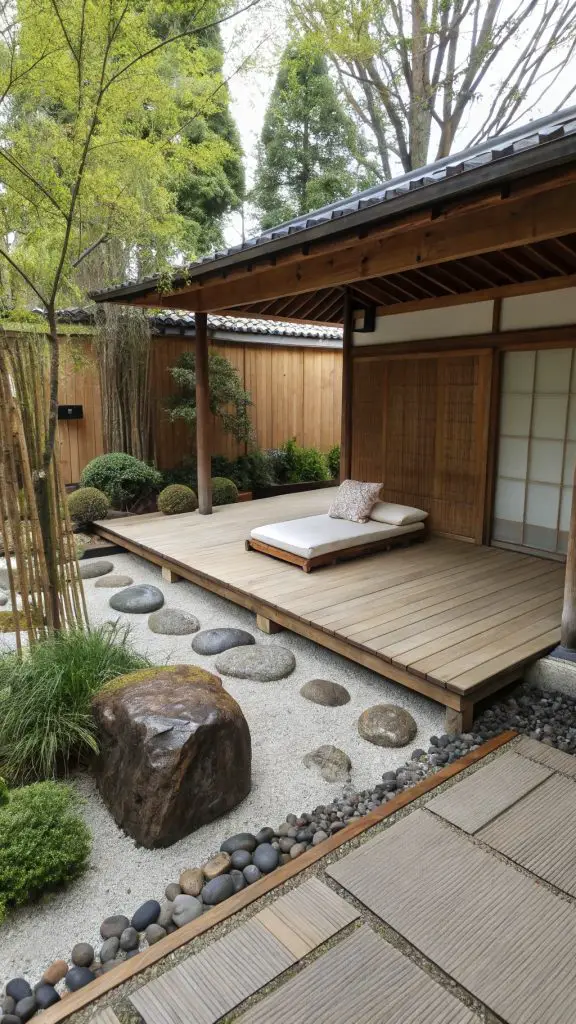
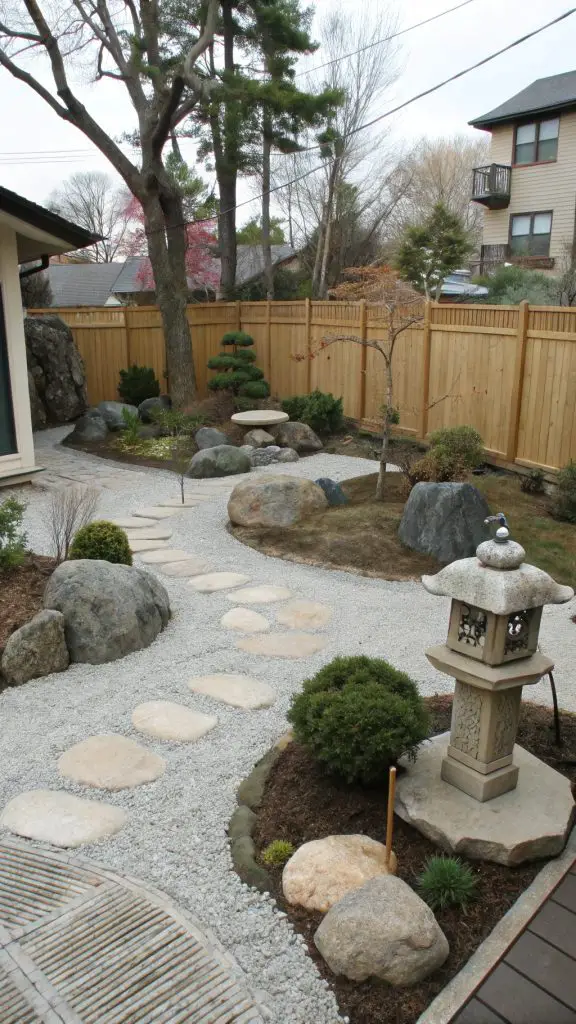
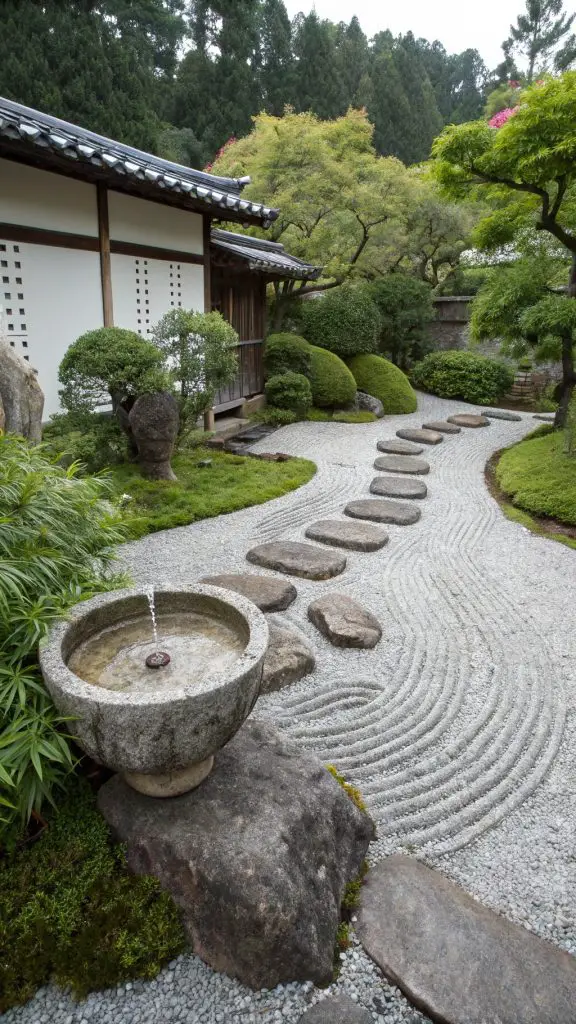
Overcoming Common Challenges in Zen Yard Design
Space Limitations and Optimization
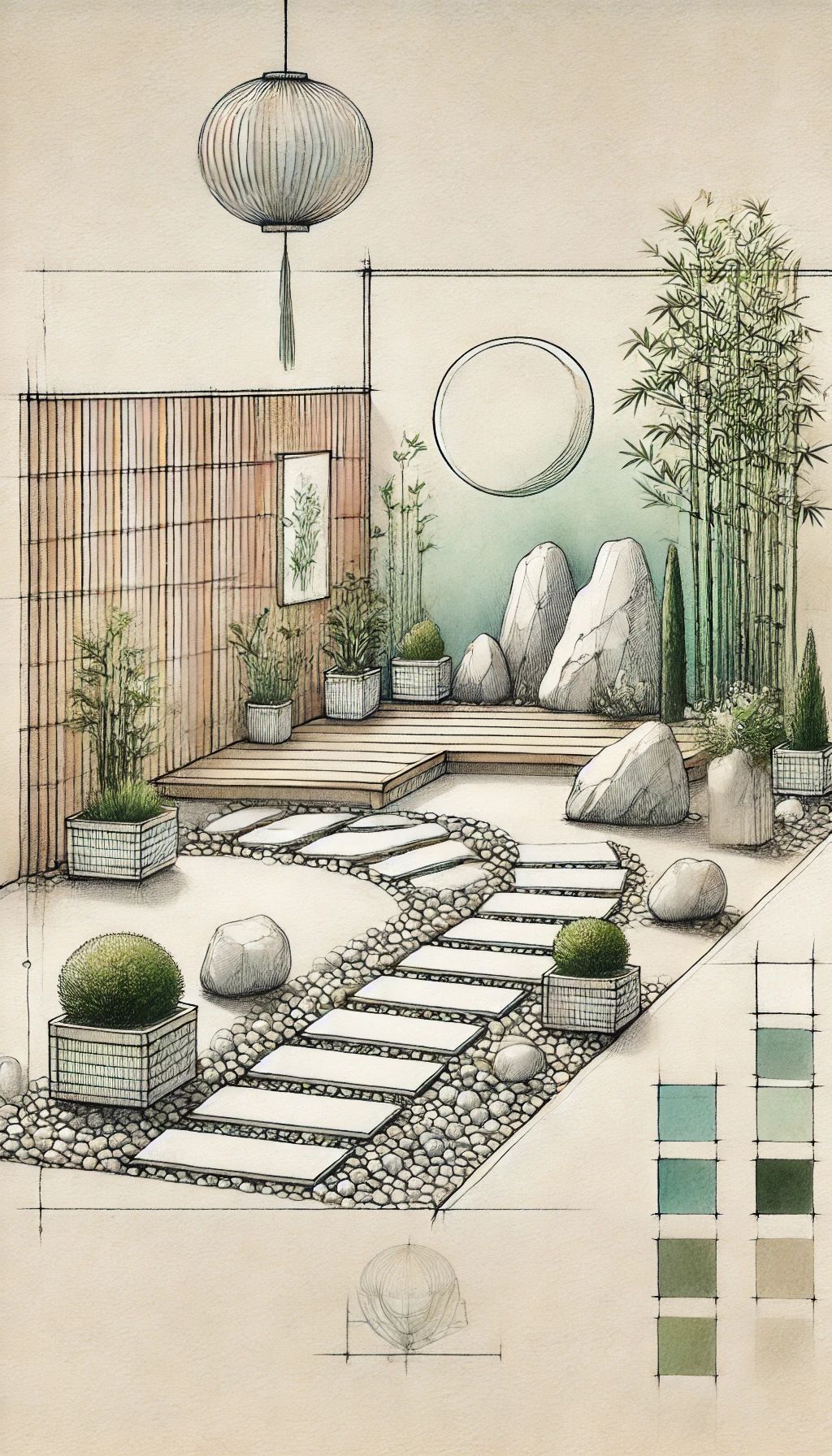
Limited space may seem like a barrier, yet creative design turns every inch into a serene haven. Consider vertical gardens or wall-mounted planters to add life without using much ground space. A small rock feature or a simple pathway can define zones clearly. A dedicated nook, even in a compact yard, offers a quiet retreat. Each design choice plays a role in transforming a tight space into a calm escape. Homeowners can find ideas on our Compact Garden Solutions page.
Climate and Environmental Considerations
Weather and local conditions shape a garden’s success. Choose hardy, native plants that thrive in your region and materials that withstand local weather. Consider sun and shade patterns when placing water features or seating areas. A design that respects environmental factors stays vibrant through seasonal changes. Thoughtful planning means the garden adjusts naturally to different conditions. Practical advice is available on our Climate-Smart Gardening page.
Budgeting and Maintenance
A peaceful space need not break the bank. Establish a clear budget to guide material and plant choices. Simple features and low-maintenance plants reduce both initial costs and ongoing upkeep. Some projects may suit a DIY approach, while others could benefit from expert advice. Regular maintenance routines help keep the garden inviting without requiring constant reinvestment. Clear financial planning makes the journey to a Zen yard manageable.
Enhancing Your Zen Experience
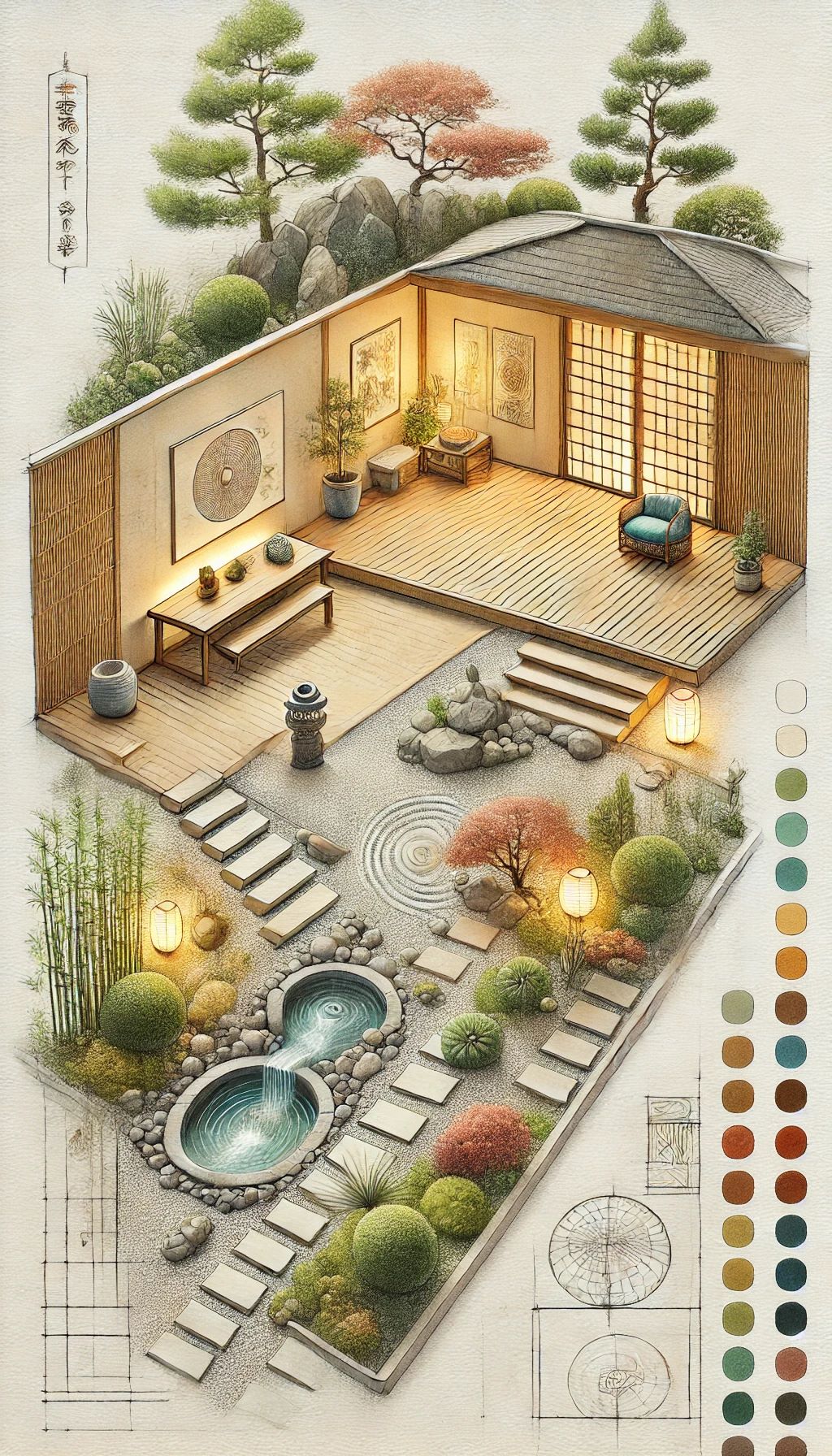
Integrating Sensory Elements
Sensory touches deepen the connection with your outdoor space. A gentle water feature produces a calming murmur, and subtle wind chimes add soft, natural notes. Warm, diffused lighting creates a peaceful glow in the evenings. Each element contributes to a space that engages the senses in a gentle way. A mindful blend of these details transforms your garden into a true retreat.
Seasonal Adjustments
As the year unfolds, simple tweaks can keep your garden fresh and inviting. Swap out plant arrangements or introduce seasonal fabrics that complement the natural setting. Cool tones may dominate in the winter, while warmer hues shine during summer. Adjustments like these bring new energy without disturbing the calm vibe. A design that shifts with the seasons remains both dynamic and timeless. Check our Seasonal Garden Updates page for further guidance.
Personalizing Your Zen Space
Adding personal touches makes your garden uniquely yours. A favorite bench, a small sculpture, or subtle artwork can reflect your taste without disrupting the overall calm. Each carefully chosen item adds a layer of meaning. Personal mementos that blend with natural elements help create a space that feels both authentic and timeless. A well-curated personal touch enhances the mindful atmosphere.
Final Thoughts
Recap of Key Points
A Zen yard transforms your outdoor space into a mindful retreat. Key ideas include balancing natural elements with minimalist design and creating open areas that invite calm. Natural materials, gentle water features, and thoughtfully arranged plants form the heart of a Zen-inspired design. Sensory touches and seasonal adjustments further refine the space. A well-planned layout boosts the appeal of your property and supports stress relief. Each element works together to create a sanctuary that welcomes quiet reflection and nurtures well-being.
Final Encouragement
Consider starting small by defining a cozy corner in your current yard. Experiment with elements such as a simple stone pathway, a modest water feature, or a cluster of native plants. Personal touches, whether a charming bench or a subtle sculpture, can add a unique flair. Share your progress and ideas with others in the community of mindful gardeners. Explore our internal guides and success stories for inspiration, and remember that even a modest space can evolve into a peaceful retreat that reflects your own style.
Additional Resources and Further Reading
For further insight into Zen garden design, explore these helpful resources:
- Books and Articles: Find in-depth guides on creating harmonious outdoor spaces.
- Local Workshops: Discover hands-on sessions that introduce key Zen garden techniques.
Additional materials provide practical steps and creative ideas to support your journey toward a tranquil outdoor oasis. Whether you are beginning your project or looking to refine an existing space, these resources offer guidance every step of the way.
